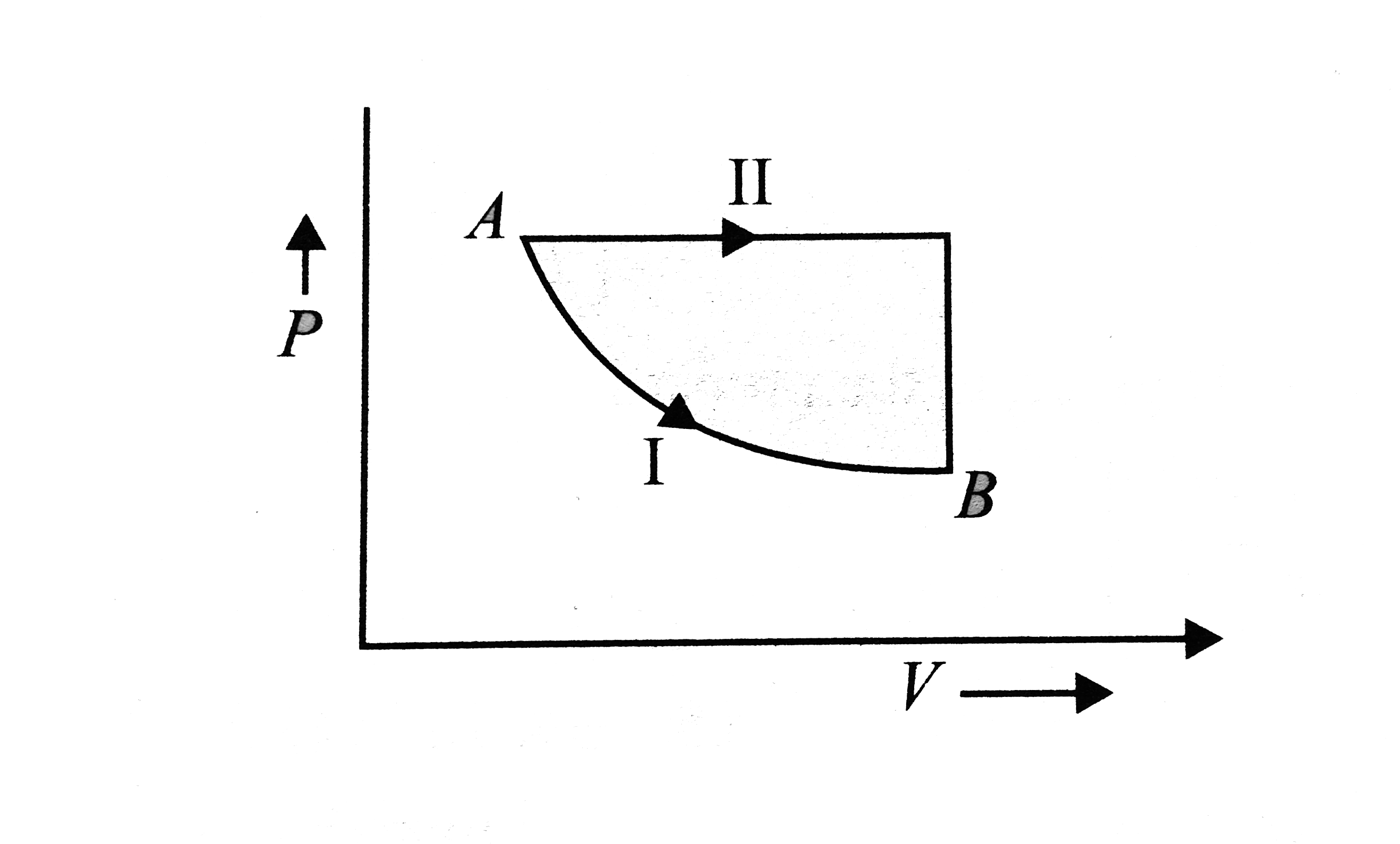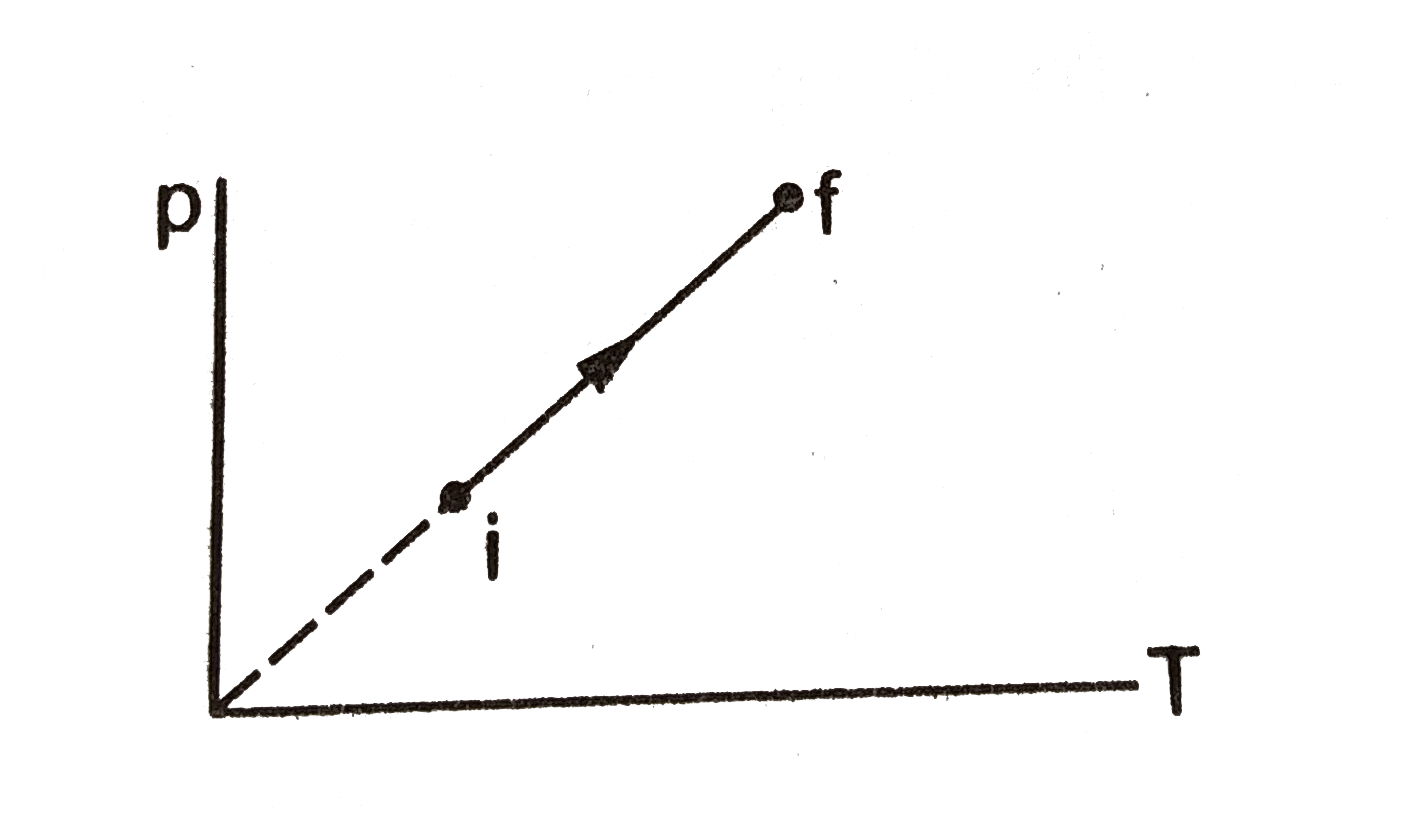A perfect gas goes from a state A to another state B by absorbing 8 × 105 J of heat and doing 6.5 × 105 J of external work. It is now transferred between the same two states in another process in which it absorbs 105 J of heat. In the second process work done by the gas is ?
The correct Answer is:10×105
To solve the problem, we will use the first law of thermodynamics, which states:
ΔU=Q−W
Where:
- ΔU = change in internal energy
- Q = heat absorbed by the system
- W = work done by the system
Step 1: Analyze the first process (from state A to state B)
In the first process:
- Heat absorbed, Q1=8×105J
- Work done by the gas, W1=6.5×105J
Using the first law of thermodynamics, we can calculate the change in internal energy (ΔU1) for the first process:
ΔU1=Q1−W1
Substituting the values:
ΔU1=(8×105)−(6.5×105)
Calculating:
ΔU1=1.5×105J
Step 2: Analyze the second process (from state A to state B)
In the second process:
- Heat absorbed, Q2=105J
- Work done by the gas, W2=? (we need to find this)
Since the change in internal energy for the same transition (from state A to state B) must be the same, we have:
ΔU2=ΔU1=1.5×105J
Using the first law of thermodynamics for the second process:
ΔU2=Q2−W2
Substituting the known values:
1.5×105=105−W2
Step 3: Solve for W2
Rearranging the equation to find W2:
W2=105−1.5×105
Calculating:
W2=105−1.5×105=−0.5×105J
Final Answer:
The work done by the gas in the second process is:
W2=−0.5×105J
This negative sign indicates that work is done on the gas.
---
- ΔU = change in internal energy
- Q = heat absorbed by the system
- W = work done by the system
- Heat absorbed, Q1=8×105J
- Work done by the gas, W1=6.5×105J
- Heat absorbed, Q2=105J
- Work done by the gas, W2=? (we need to find this)
Topper's Solved these Questions
- THERMODYNAMICSBOOK - CENGAGE PHYSICS ENGLISHCHAPTER - THERMODYNAMICSEXERCISE - 17
1 Video
- THERMODYNAMICSBOOK - CENGAGE PHYSICS ENGLISHCHAPTER - THERMODYNAMICSEXERCISE - 18
1 Video
- THERMODYNAMICSBOOK - CENGAGE PHYSICS ENGLISHCHAPTER - THERMODYNAMICSEXERCISE - 15
3 Videos
- SUPERPOSITION AND STANDING WAVESBOOK - CENGAGE PHYSICS ENGLISHCHAPTER - SUPERPOSITION AND STANDING WAVESEXERCISE - Comprehension Type
5 Videos
- TRANSMISSION OF HEATBOOK - CENGAGE PHYSICS ENGLISHCHAPTER - TRANSMISSION OF HEATEXERCISE - Single correct
9 Videos
Similar Questions
A perfect gas goes from state A to another state B by absorbing 8 x 105 J of heat and doing 6.5 x 105 J of external work. It is now transferred between the same two states in another process in which it absorbs 105 J of heat. Then in the second process,
View SolutionA certain mass of gas is taken from an initial thermodynamics state A to another state B by process I and II. In process I for the gas does 5J of work and absorbs 4J of heat energy. In process II, the gas absorbs 5J of heat. The work done by the gas in process II is

View Solution
Knowledge Check
When the state of a gas adiabatically changed from an equilibrium state A to another equilibrium state B an amount of work done on the stystem is 35 J. If the gas is taken from state A to B via process in which the net heat absorbed by the system is 12 cal, then the net work done by the system is (1 cal = 4.19 J)
Aa. 13.2JBb. 15.4 JCc. 12.6 JDd. 16.8 JIn changing the state of a gas adiabatically from an equilibrium state A to another equilibrium state B an amount of work equal to 22.3 J is done on the system.If the gas is taken from state A to B via a process in which the net heat absorbed by the system is 9.35 cal then the net work done by the system in latter case is
(Take 1 case =4.2 J)A15 JB16 JC17 JD18 J
An ideal gas goes from the state i to the state ∫ as shown in .the work done by the gas during the process

View SolutionA gas undergoes a change of state during which 100J of heat is supplied to it and it does 20J of work. The system is brough back to its original state through a process during which 20 J of heat is released by the gas. What is the work done by the gas in the second process?
View Solution600J of heat is added to a monoatomic gas in a process in which the gas performs a work of 150J. The molar heat capacity for the process is
View SolutionA gas undergoes change from state A to state B. In this process, the heat absorbed and work done by the gas is 5 J and 8 J, respectively. Now gas is brought back to A by another process during which 3 J of heat is evolved. In this reverse process of B to A:
View SolutionIn changing the state of a gas adiabatically from an equilibrium state A to another equilibrium state B, an amount of work equal to 22.3 J is done on the system. If the gas is taken from state A to B, via a process in which the net heat absorbed by the system is 9.35 cal, how much is the net work done by the system in the latter case ?
View SolutionIn changing the state of a gas adiabatically from an equilibrium state A to another equilibrium state B, an amount of work equal to 22.3J is done on the system. If the gas is taken from State A to B via a process in which the net heat absorbed by the system is 9.35cal., How much is the net work done by the system in the later case? (Take 1cal.=4.9J)
View Solution